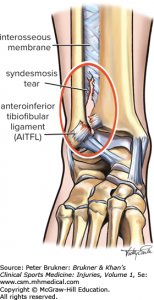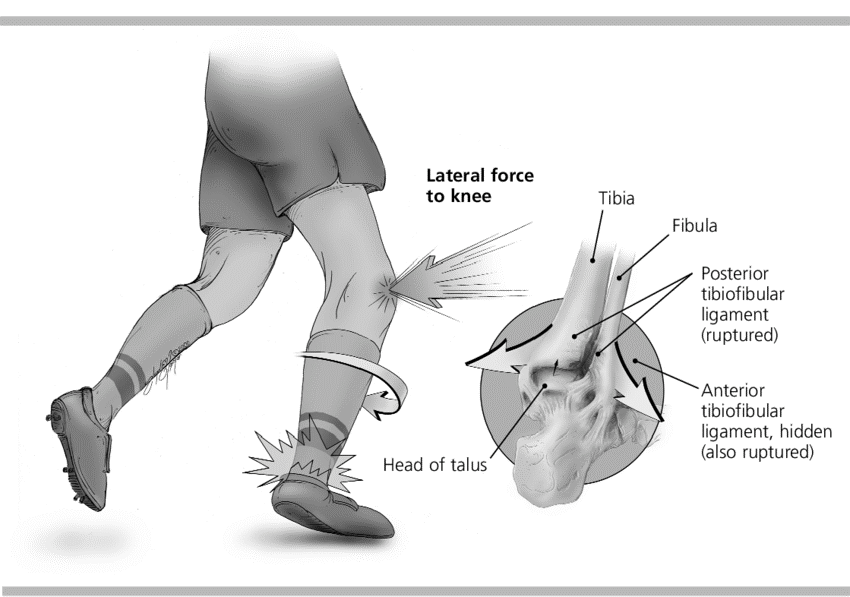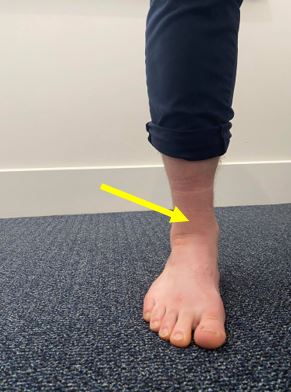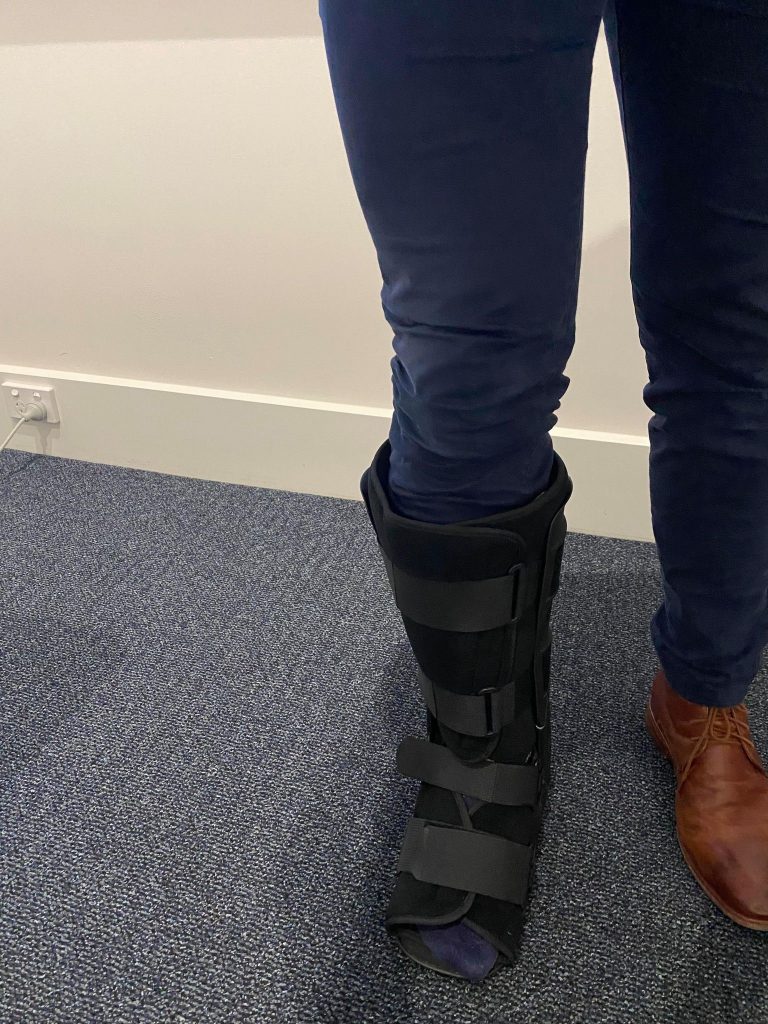14 Oct Ankle Syndesmosis Injury
Some other terms that may be used to describe this injury include:
- Anterior Inferior Tibiofibular Ligament (AITFL) Injury
- High Ankle Sprain
- Inferior Tibiofibular Joint Injury
- Distal Tibiofibular Joint Injury
What is Ankle Syndesmosis Injury?
The ankle syndesmosis is the joint that connects the tibia and fibula, the two bones of the lower leg. The ligaments which run between these bones can be sprained or ruptured.
These ligaments include:
- Anterior inferior tibiofibular ligament
- Posterior inferior tibiofibular ligament
- Interosseous ligament
Ankle syndesmosis injuries are common. In sporting populations, around 17% of ankle sprains are ankle syndesmosis injuries (Gerber et al., 1998).

Mechanism of Injury
Ankle syndesmosis injuries often include a rotation of the foot when the ankle injury occurs.
They also often involve the ankle being ‘jammed up’, or a fall from a height.
A syndesmosis injury may occur at the same time as other injuries to the ankle; such as ankle fractures, osteochondral lesions of the talus and medial ankle sprains.

Mechanisms of Injury in Ankle Syndesmosis Injuries. Image reproduced from: Wolfe, MW & Uhl, Tim & Mattacola, Carl & McCluskey, LC. (2001). Management of ankle sprains (vol 63, pg 93, 2001). American family physician. 64. 386-386.Symptoms
- Pain across the front of the ankle, as seen below
- Bruising and swelling at the ankle, especially at the front of the ankle. The swelling and bruising may travel down the leg
- Pain that is worth with rotation at the ankle
- Pain and difficulty weight bearing
It is important to remember that there may be other symptoms if there has been other injuries to the ankle that happen at the same time.

Diagnosis
A thorough assessment by your physiotherapist can assist with diagnosing an ankle syndesmosis injury. If required, your physiotherapist can refer on for imaging of the ankle, often an XRAY and/or MRI.
The prognosis will depend on the extent of the injury, as well as any other concurrent injuries. Ankle syndesmosis injuries can be graded, as per the following table.

Treatment
Treatment will depend on the severity of the injury.
Grade 1 injuries are generally well managed with physiotherapy. Physiotherapy will involve allowing tissue to heal, building strength and stability around the ankle as well as restoring movement.
For grade 2 and 3 injuries, surgery may be required if the ankle is unstable. This may involve ankle arthroscopy, tightrope fixation or screw fixation.
Your physiotherapist will then guide you through a graded rehabilitation program, which aims to restore movement, strength and stability.
A CAM boot (below) may be required to offload the ankle in some syndesmosis injuries.

Want to learn more about other causes of ankle pain:
Read More About Lateral Ankle Sprains Read More About Acute Ankle Injury

